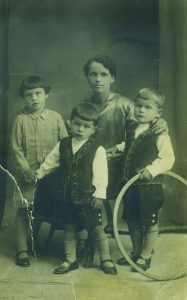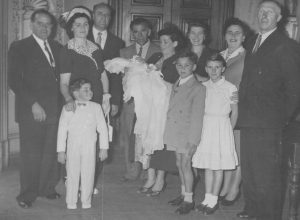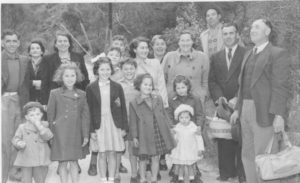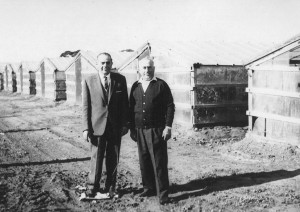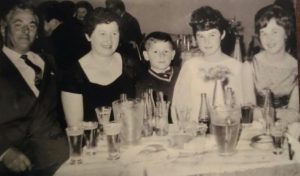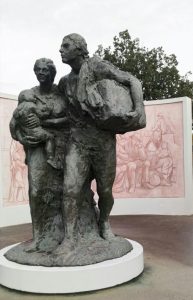It has been a pleasure to receive comments about the series of blogs published on the website in the last two months. In the blogs so far, I’ve written about aspects of the history of the Veneto market gardeners community, the oral history project and my research. The website is live, and the number of views recorded indicate that there are a lot of people looking at the various pages.

Relatives have told me that it is important to learn more about the Veneto community and the people whom their parents and grandparents knew. In the oral histories, people record memories about the past and the experience of growing up in a migrant family of market gardeners. In their interviews they create new understandings of the past and add new knowledge about earlier generations and the Veneto community in Adelaide between the wars. The interviews offer details about the experience of migration and what it means to be a second or third generation Italian Australian whose family developed and worked market gardens in the western suburbs of Adelaide.
The individual stories gathered on the website combine to create a rich history of the community from the 1920s and with the new feature, ‘Contemporary voices’, the third generation is contributing their views.
The photos on the pages provide images of family life, work, relationships and events like marriages, baptisms and birthday parties in the community. You will see photos that were taken as early as the 1930s in Adelaide. And we are fortunate to have some photos that were brought from Italy prior to the family settling in Adelaide. Families have preserved the knowledge of their ancestors and relatives in the photos which add to our knowledge of history.
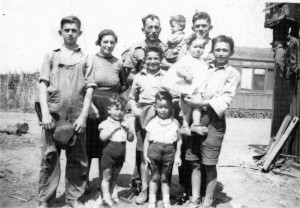
Middle: Orlando, Assunta & Lino Tonellato
Front: Dino, Nillo Piovesan
I would like the website to be interactive and I welcome the reflections that people send me. I am delighted that some relatives are interested in writing a blog about their own family experience. In the next months you can expect to read different aspects of life in several families of the pioneer Veneto market gardener community who arrived between 1926 and 1928. Johnny Rebuli, from Bigolino, a great-nephew of Brunone Rebuli writes about the experience of living in Adelaide and going to live with his nonno in Bigolino in the 1960s. Elena Rebuli, from Adelaide, granddaughter of Brunone Rebuli, describes her parents’ decision to return to live in the Veneto in the 1960s.
I welcome contributions from other relatives who might want to add their perspectives of the Veneto community in Adelaide.
Please contact me if you would like to write a blog and we can add it to the website and arrange to publish it also in Italian.
Madeleine Regan
12 May 2019
Notizie sui blog futuri
E’ stato un piacere ricevere commenti riguardanti la serie di blogs pubblicati in questo sito negli ultimi due mesi. Sino ad ora, ho scritto nei blogs gli aspetti della storia della comunità di ortolani Veneti, il progetto orale della storia e la mia ricerca. Il sito è vivo ed il numero di visualizzazioni registrati, indicano che c’è molta gente che guarda le varie pagine.

I parenti mi hanno riferito che è importante conoscere di più la comunità Veneta e le persone che i loro genitori o nonni frequentavano. Nelle storie orali, la gente ricorda il passato e l’esperienza d’essere cresciuti in una famiglia di emigranti ortolani. Nelle loro interviste essi assumono maggiore comprensione del passato ed aggiungono nuova consapevolezza tra le loro precedenti generazioni e la comunità Veneta di Adelaide durante il periodo delle guerre. Le interviste propongono altri dettagli circa l’esperienza dell’emigrazione e cosa significhi essere un’Australiana Italiana di seconda o terza generazione, la cui famiglia sviluppò e coltivò prodotti orticoli nei sobborghi di Adelaide.
Le storie individuali raccolte nel sito si intrecciano, creando pertanto una ricca storia della comunità dagli anni venti, e, con la nuova configurazione “Voci attuali”, la terza generazione sta contribuendo con i suoi giudizi e la sua conoscenza ad integrare.
Le foto nelle pagine forniscono immagini di vita familiare, lavoro, parentela ed avvenimenti quali: matrimoni, battesimi e feste di compleanno della comunità. Vedrete foto che sono state fatte ad Adelaide tempo fa, negli anni trenta. Siamo altrettanto fortunati di aver avuto foto portate dall’Italia prima che la famiglia si stabilizzasse ad Adelaide. Tramite le foto, le famiglie hanno mantenuto la conoscenza dei loro avi e parenti, e questo va a sommarsi alla nostra conoscenza storica.

Mi piacerebbe che il sito fosse interattivo e gradirei ricevere le considerazioni e valutazioni della gente. Sono contenta che alcuni parenti siano interessati a scrivere un blog sulla propria esperienza di famiglia. Nei prossimi mesi potrete aspettarvi di leggere diversi aspetti di vita in parecchie famiglie della comunità Veneta, di pionieri ortolani arrivati tra il 1926 ed il 1928. Johnny Rebuli, da Bigolino, un parente di Brunone Rebuli, descrive la sua esperienza nel vivere in Adelaide e poi ritornare a vivere con il suo nonno a Bigolino negli anni sessanta. Elena Rebuli, da Adelaide e nipota di Brunone Rebuli, descrive la decisione dei suoi genitori di ritornare in Veneto negli anni sessanta. Do il benvenuto a qualsiasi collaborazione da parte di altri parenti che vogliano aggiungere i loro punti di vista sulla comunità Veneta di Adelaide.
Vi prego di contattarmi se volete scrivere un blog: possiamo aggiungerlo al sito ed occuparci di tradurlo anche in italiano.
Madeleine Regan
Il 12 maggio 2019
